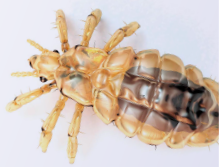Debunking the myths
There are lots of myths surrounding head lice and their treatment. As a member of the pharmacy team, you play a key role in ensuring that customers are reassured and given the correct information.
Click to reveal the truth behind the myth.
MYTH 1
Head lice always cause an itchy scalp
TRUTH: Not everyone experiences itching when they get head lice and there are often no symptoms at all.1 It's wise for customers to check their family's hair regularly; head lice should be treated as soon as they're discovered so they don't have a chance to multiply.
MYTH 2
Anyone with nits should be treated for head lice
TRUTH: A person should only be treated for head lice if a live louse or lice are found on their head.2 Nits are dead, empty head lice egg cases and their presence does not confirm a head lice infestation.
MYTH 3
Head lice have become resistant to treatment

TRUTH: Head lice can be resistant to treatments based on insecticides, which are designed to work by poisoning the lice. However, they are unlikely to be resistant to insecticide-free treatments. This is because these products work in a completely different way, with a physical mode of action that suffocates the lice and their eggs.
Insecticide-free treatments contain active ingredients such as dimeticone, osmolone or oxyphthirine. Look for these ingredients on pack.
NICE guidelines recommend that after treatment has been completed, the hair should be combed with a detection comb to check that it has been successful.3
The presence of nits in the hair after treatment doesn't necessarily mean that the treatment has failed. Remember: live lice are the only proof of an active infection (see Myth 2).
